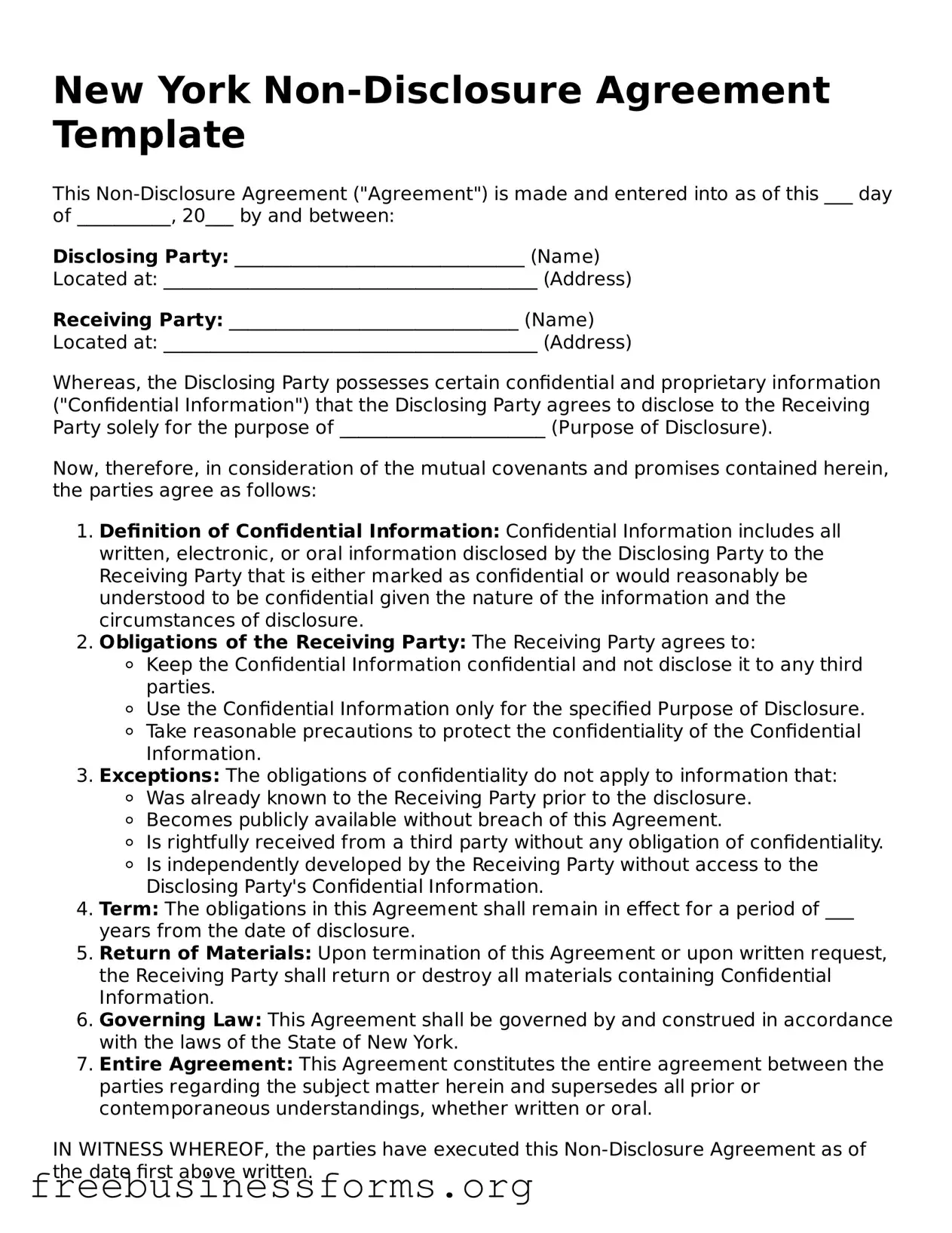New York Non-Disclosure Agreement Template
This Non-Disclosure Agreement ("Agreement") is made and entered into as of this ___ day of __________, 20___ by and between:
Disclosing Party: _______________________________ (Name)
Located at: ________________________________________ (Address)
Receiving Party: _______________________________ (Name)
Located at: ________________________________________ (Address)
Whereas, the Disclosing Party possesses certain confidential and proprietary information ("Confidential Information") that the Disclosing Party agrees to disclose to the Receiving Party solely for the purpose of ______________________ (Purpose of Disclosure).
Now, therefore, in consideration of the mutual covenants and promises contained herein, the parties agree as follows:
- Definition of Confidential Information: Confidential Information includes all written, electronic, or oral information disclosed by the Disclosing Party to the Receiving Party that is either marked as confidential or would reasonably be understood to be confidential given the nature of the information and the circumstances of disclosure.
- Obligations of the Receiving Party: The Receiving Party agrees to:
- Keep the Confidential Information confidential and not disclose it to any third parties.
- Use the Confidential Information only for the specified Purpose of Disclosure.
- Take reasonable precautions to protect the confidentiality of the Confidential Information.
- Exceptions: The obligations of confidentiality do not apply to information that:
- Was already known to the Receiving Party prior to the disclosure.
- Becomes publicly available without breach of this Agreement.
- Is rightfully received from a third party without any obligation of confidentiality.
- Is independently developed by the Receiving Party without access to the Disclosing Party's Confidential Information.
- Term: The obligations in this Agreement shall remain in effect for a period of ___ years from the date of disclosure.
- Return of Materials: Upon termination of this Agreement or upon written request, the Receiving Party shall return or destroy all materials containing Confidential Information.
- Governing Law: This Agreement shall be governed by and construed in accordance with the laws of the State of New York.
- Entire Agreement: This Agreement constitutes the entire agreement between the parties regarding the subject matter herein and supersedes all prior or contemporaneous understandings, whether written or oral.
IN WITNESS WHEREOF, the parties have executed this Non-Disclosure Agreement as of the date first above written.
_______________________________
Disclosing Party (Signature)
_______________________________
Receiving Party (Signature)
_______________________________
Date
_______________________________
Date
